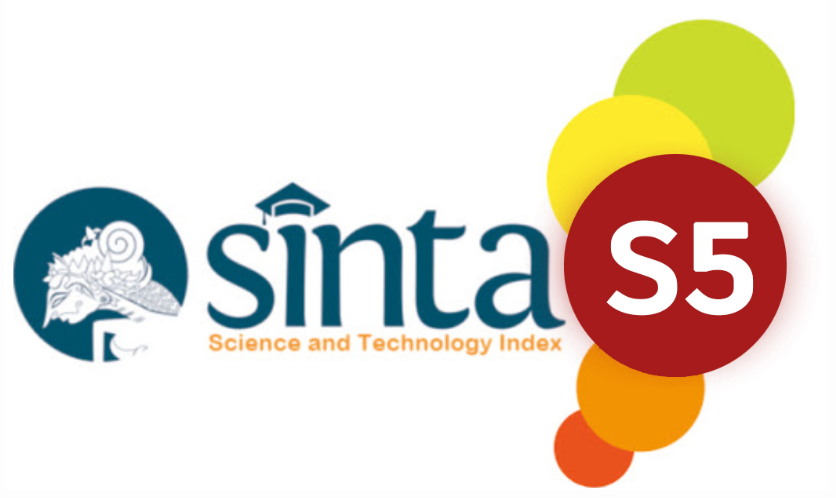Heart or Grace Score for Diagnostic and Risk Stratification in Acute Coronary Syndrome Patients
DOI:
https://doi.org/10.32734/sumej.v8i1.17168Keywords:
acute coronary syndrome, hospital, risk assessmentAbstract
Background: Some studies found that HEART score is better than GRACE score either as a rule-in method for myocardial infarction or as a risk stratification. However, GRACE score was also found to have better discriminatory ability as a prognostic model for patients with myocardial infarction. Objective: This study aims to evaluate whether the HEART and GRACE scores have equal capabilities either as a diagnostic method for myocardial infarction or risk stratification to predict in-hospital Major Adverse Cardiovascular Events (MACE) in Acute Coronary Syndrome (ACS) patients at Adam Malik Hospital. Methods: This research is a retrospective and prospective observational study. Retrospective data was collected from all medical records of ACS patients from January to December 2022. Prospective data was collected by consecutive sampling until 46 samples were fulfilled from October 2023 at Adam Malik Hospital. Samples included in the research analysis were those who met the inclusion criteria. To compare each score, we use the area under the receiver-operating characteristics (AUC) method. Results: HEART score is superior to GRACE score as a diagnostic method with an AUC of 0.903, a cutoff of 6.5, sensitivity of 86%, and specificity of 80%. The GRACE score is superior to the HEART score as a risk stratification with an AUC of 0.719, a cutoff of 128.5, sensitivity of 66%, and specificity of 65%. Conclusion: HEART score is superior for diagnosis, and GRACE score is superior for risk stratification.
Downloads
References
Tsao C, Aday A, Almarzooq Z, Alonso A, Beato A, Bittencourt M, et al. Heart Disease and Stroke Statistics – 2022 Update: A Report From the American Heart Association. Circulation. 2022;145:e153–e639.
Biro Komunikasi dan Pelayanan Masyarakat Kemenkes RI. Penyakit Jantung Koroner Didominasi Masyarakat Kota. Sehat Negeriku. Kementerian Kesehatan Republik Indonesia; 2021 Sep 28 [cited 2022 Dec 28]. Available from: https://sehatnegeriku.kemkes.go.id/baca/umum/20210927/5638626/penyakit-jantung-koroner-didominasi-masyarakat-kota/
Juzar D, Danny S, Irmalita, Tobing D, Firdaus I, Widyantoro B, et al. Pedoman Tata Laksana Sindrom Koroner Akut Edisi Keempat. Jakarta: Perhimpunan Dokter Spesialis Kardiovaskular Indonesia; 2018. Available from: https://www.inaheart.org/publications
Shin YS, Shin A, Kim Y, Ryoo SM, Sohn CH, Kim WY. Risk Stratification of Patients With Chest Pain or Anginal Equivalents in The Emergency Department. Intern Emerg Med. 2020;15(2):319–26.
Moy E, Barrett M, Coffey R, Hines AL, Toker DE. Missed diagnoses of acute myocardial infarction in the emergency department: variation by patient and facility characteristics. Diagnosis. 2015;2(1):29–40.
Six AJ, Cullen L, Backus BE, Greenslade J, Parsonage W, Aldous S, et al. The HEART Score for the Assessment of Patients With Chest Pain in The Emergency Department. Crit Pathw Cardiol. 2013;12:121–6.
Antman EM, Cohen M, Bernink PJ, Horacek T, Papuchis G, Mautner B, et al. The TIMI Risk Score for Unstable Angina/Non-ST Elevation MI: A Method for Prognostication and Therapeutic Decision Making. JAMA. 2000;284(7):835–42.
Fox KA, Dabbous OH, Goldberg RJ, Pieper KS, Eagle KA, Werf F, et al. Prediction of Risk of Death and Myocardial Infarction in The Six Months After Presentation With Acute Coronary Syndrome: Prospective Multinational Observational Study (GRACE). BMJ. 2006;333(7578):1091.
Stepinska J, Lettino M, Ahrens I, Bueno H, Castrillo L, Khoury A, et al. Diagnosis and risk stratification of chest pain patients in the emergency department: focus on acute coronary syndromes. A position paper of the Acute Cardiovascular Care Association. Eur Heart J Acute Cardiovasc Care. 2020;9(Suppl 1):76–89.
Hrecko J, Dokoupil J, Pudil R. Comparison of Six Decision Aid Rules For Diagnosis of Acute Myocardial Infarction In Elderly Patients Presenting To The Emergency Department With Acute Chest Pain. Bratisl Med J. 2022;1–24.
Collet JP, Thiele H, Barbato E, Barthelemy O, Bauersachs J, Bhatt DL, et al. 2020 ESC Guidelines for the management of acute coronary syndromes inpatients presenting without persistent ST-segment elevation. Eur Heart J. 2021;42:1289–1367.
Khalill R, Han L, Jing C, Quan H. The use of risk scores for stratification of non-ST elevation acute coronary syndrome patients. Exp Clin Cardiol. 2009;14(2):e25–e30.
Ibanez B, James S, Agewall S, Antunes MJ, Ducci CB, Bueno H, et al. 2017 ESC Guidelines for the management of acute myocardial infarction in patients presenting with ST-segment elevation. Eur Heart J. 2018;39:119–177.
Brady W, Souza K. The HEART Score: A Guide to Its Application in the Emergency Department. Turk J Emerg Med. 2018;18:47–51.
Backus BE, Six AJ, Kelder JC, Mast TP, Akker F, Mast EG, et al. Chest Pain in the Emergency Room: A Multicenter Validation of the HEART Score. Crit Pathw Cardiol. 2010;9:164–9.
Backus BE, Six AJ, Kelder JC, Bosschaert MAR, Mast EG, Mosterd A, et al. A Prospective Validation of the HEART Score for Chest Pain Patients at the Emergency Department. Int J Cardiol. 2013;168(3):2153–8.
Melki D, Jernberg T. HEART Score: A Simple and Useful Tool That May Lower the Proportion of Chest Pain Patients Who Are Admitted. Crit Pathw Cardiol. 2013;12:127–31.
Firdaus I. In: Yuniadi Y, Hermanto DY, Siswanto BB, editors. Sindrom Koroner Akut Non ST-Elevasi. Buku Ajar Kardiovaskular Jilid 2. Jakarta: Sagung Seto; 2017.
Thygesen K, Alpert JS, Jaffe AS, Chaitman BR, Bax JJ, Morrow DA, et al. Fourth Universal Definition of Myocardial Infarction (2018). Circulation. 2018;138:e618–e651.
Bosco E, Hsueh L, McConeghy K, Gravenstein S, Saade E. Major Adverse Cardiovascular Event Definitions Used in Observational Analysis of Administrative Databases: A Systematic Review. BMC Med Res Methodol. 2021;21:241.
Byrne RA, Rossello X, Coughlan JJ, Barbato E, Berry C, Chieffo A, et al. 2023 ESC Guidelines for the management of acute coronary syndromes. Eur Heart J. 2023;00:1–107.
Kabiri A, Gharin P, Forouzannia SA, Ahmadzadeh K, Miri R, Yousefifard M. HEART versus GRACE Score in Predicting the Outcome of Patients with Acute Coronary Syndrome: a Systematic Review and Meta-Analysis. Arch Acad Emerg Med. 2023;11(1):e50.
Downloads
Published
How to Cite
Issue
Section
License
Copyright (c) 2025 Sumatera Medical Journal

This work is licensed under a Creative Commons Attribution-ShareAlike 4.0 International License.
The Authors submitting a manuscript do so on the understanding that if accepted for publication, copyright of the article shall be assigned to Sumatera Medical Journal (SUMEJ) and Faculty of Medicine as well as TALENTA Publisher Universitas Sumatera Utara as publisher of the journal.
Copyright encompasses exclusive rights to reproduce and deliver the article in all form and media. The reproduction of any part of this journal, its storage in databases and its transmission by any form or media, will be allowed only with a written permission from Sumatera Medical Journal (SUMEJ).
The Copyright Transfer Form can be downloaded here.
The copyright form should be signed originally and sent to the Editorial Office in the form of original mail or scanned document.











